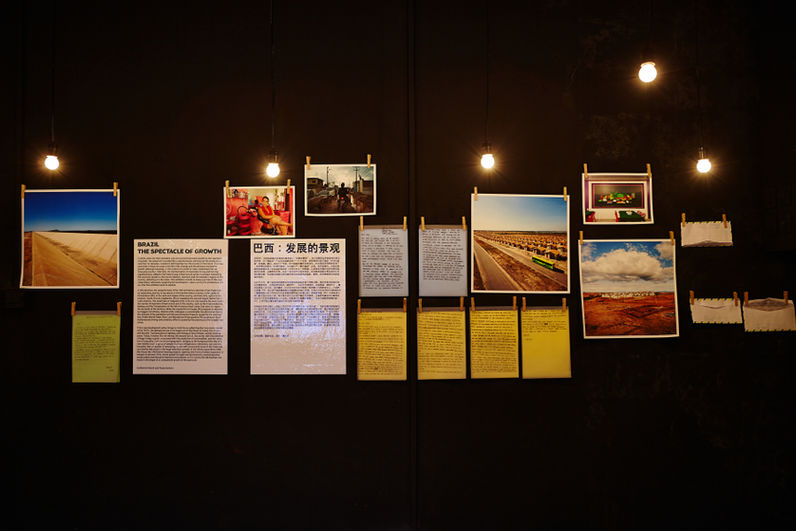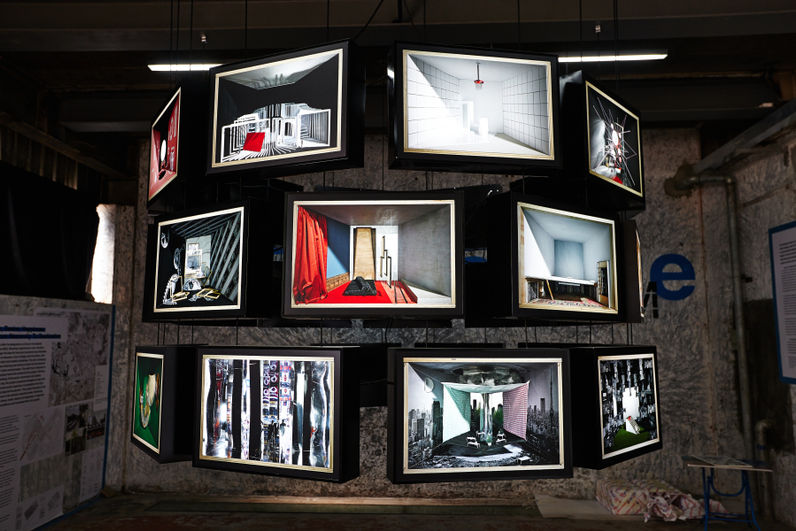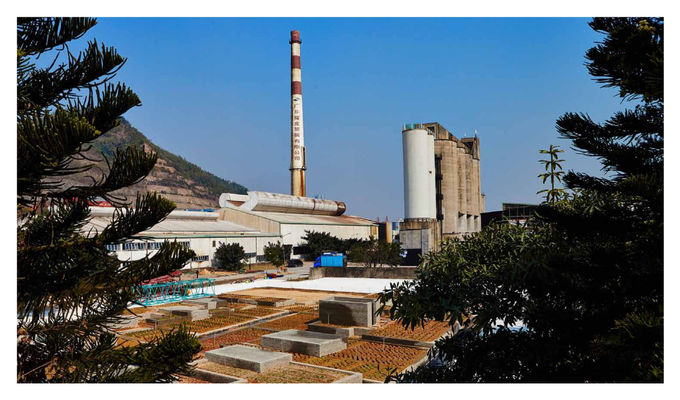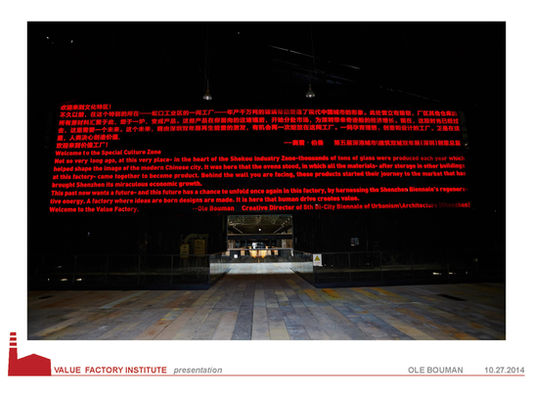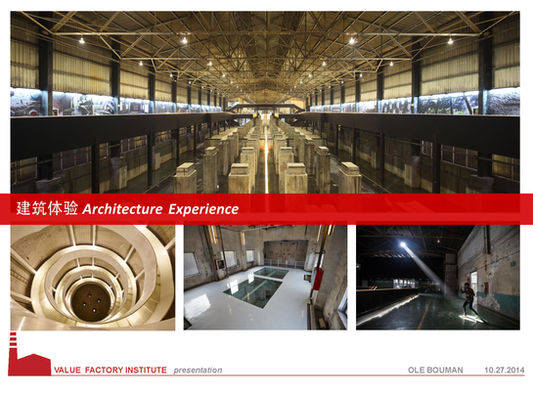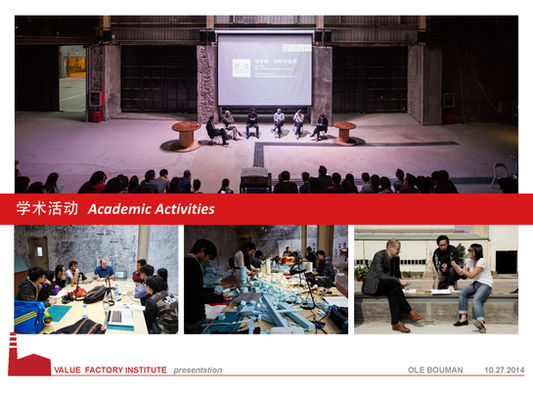
Value Factory
2013-2014
Rather than temporarily running the "main venue" of the 5th Shenzhen Urbanism and Architecture Bi-City Biennale in 2013, I proposed to curate a lasting transformation into an actual “Special Culture Zone” poised to become an important place for cultural production in Shenzhen for the years to come. The actual regeneration from a place of mass production to a place for ideas, renamed as Value Factory, broke down into three parts: 1. a physical transformation to expose and amplify the unique qualities of an industrial building and site and hence a showcase of the power of design to rescue value; 2. the temporary inhabitation by a range of global cultural institutions, to study, expand, leverage and show their work in China; 3. the organization of a wide range of public activities, to bring the factory alive on a daily basis, including the running of a design school for the duration of the Biennale. The plan was executed by a small team, including Liu Lei, Jorn Konijn and Vivian Zuidhof.
Preface
towards a value factory for Shenzhen
As Creative Director of the 5th UABB, I am proud to present to you: The Value Factory.
Conceived, designed and programmed to last much longer than the Biennale’s duration of three months, this project harkens back to the Biennale’s original idea: to create an event that acts as an urban catalyst, setting the tone for the future of the city it is dedicated to. This is why the UABB decided to use Shekou at the city’s urban border and a derelict glass factory as its main venue. At first, the factory did not seem to have much worth; now I am sure we have rescued its value.
It took my team 10 steps to get there and you will find or encounter these steps during your visit. Let me reveal them, and guide you through them…
read more
Towards
A Value Factory
in 10 Steps
01
From an economic to a culture zone
02
From sponsor to investor
03
From background to foreground
04
Doing almost nothing
05
Value Factory match-making
06
Value Factory program partners
07
Value Factory Studio
08
Value Factory Academy
09
Value Factory public program
10
Connecting roads
Urban Border
urbanism\architecture bi-city biennale 2013-2014
read the UABB publication
Value Factory Imaginations
a catalogue of value factory academy
From the very beginning of the Biennale project, it was said that the Value Factory’s horizon lies beyond that single three-monthly event. That it was poised to become a lasting place of inspiring bold ideas of designers, clients, and visiting citizens. A place for creativity as in Albert Einstein’s famous words- intelligence having fun. A place of learning and a place of doing. At the re-opening op this old factory building in its new default setting in December 2013, it was ready for further experiment, occupation, programming. Shenzhen life could take over…
_j.jpg)
Value Factory Academy
follow-up plan
Re-Creation
the resilience of architecture
Two primitive huts located in front of the Finnish Pavilion in Venice were constructed by Finnish and Chinese master carpenters to showcase the resilience and similarity of traditional building techniques used in both countries. The project, entitled Re-Creation, was based on a concept by architect Anssi Lassila of OOPEAA Office for Peripheral Architecture and will be open for visitors during the 14th International Architecture Exhibition in Venice. The installation curated by Ole Bouman and Juulia Kauste aims to respond to the Biennale’s
theme, which focuses on the timeless basics of architecture. The two wooden structures were built by Finnish and Chinese teams-the project was developed in collaboration with the Shenzhen BI-CITY Biennale of Urbanism\Architecture (UABB) - and are presented in front of the pavilion designed by Alvar Aalto in 1956. Their simplicity strikes up a complex dialogue between architects and local builders and embraces an appreciation for traditional building techniques.
… These fundamentals are vibrant, not buried by digital technology or modernity. It shows that they are still very much alive and still have their power and their relevance. And with you questioning about the other exhibition and the elements of architecture, and with the observation that architecture dissolves into something, we do not know yet what it will be. It is not exactly the eternal discipline, as the mother of all arts, not like the old principles of architecture: to create space, to create connections between people, and to shelter people. All these responsibilities that have driven the discipline for such a long time. It seems to be dissolving, as proven by Koolhaas' research. But that makes it all the more important to show how vibrant it can still be. So, if you ask about the dialogue, it's not deliberate, it's just coincidence. But, I think it's also good to learn more about positive options, for the persistence of the quality of architecture as it used to be.














